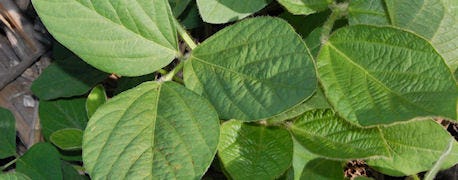March 26, 2014

Two herbicides recently labeled for use on edamame are welcome additions to the battle against weeds in production of the crop, which is growing in popularity in the United States, notes a University of Illinois crop sciences researcher and USDA-ARS ecologist.

Two Recently Registered Herbicides Will Make Growing Edamame Much Easier
With the help of the IR-4 Project, the herbicides imazamox (Raptor, BASF) and fomesafen (Reflex, Syngenta), both used in soybean for years, were recently registered by the Environmental Protection Agency for use on edamame (vegetable soybean). Marty Williams says this is good news for producers because not only do these herbicides add two new modes of action in edamame-approved products, but they are also the first post-emergence herbicides with activity of broadleaf weeds.
"Right now hand-weeding costs can exceed $500 per acre, so more cost-effective weed management tools are critical," he notes. "More diverse weed management systems in edamame ultimately will reduce the cost of hand weeding, potentially allowing it to be grown on more acres."
In 2010, the United States imported an estimated 100,000 tons of edamame, mostly from China, with some imported from Taiwan.
"Although not everyone is the U.S. is familiar with edamame, demand is growing strongly," Williams says. "We are the number one soybean producer in the world, so why don't we grow more edamame here?"
Edamame is a complete protein with all the essential amino acids, which is unique to a vegetable crop. It also contains "good fats" that are largely unsaturated fats. Often marketed as a healthy snack food, edamame requires minimal processing and preparation.
The federal labeling of these herbicides could mean that, in time, more of what you buy in the grocery store was grown in the U.S. and not imported. "Part of the motivation for growing edamame here is so that there is a complete understanding of how it's actually being produced," he says.
Before registration of imazamox in late 2013 and fomesafen in March 2014 for use on edamame, the EPA had approved the use of only a few other products since July 2011.
"In a relatively short amount of time, just three years, the number of herbicides we now have for managing weeds in the crop has increased dramatically," Williams says. "More work remains but this achievement has lowered the height of one barrier to domestic edamame production."
Unlike soybeans, which are harvested after a long season and senescence has occurred, edamame is harvested at the full-seed stage (R6) while the plant is entirely green and the seeds are large in the pod. Because of this contrast, the EPA treats edamame as a different crop regarding pesticide use.
While previous herbicides have been helpful in addressing certain weed species, current issues of herbicide resistance make the need for new modes of action even more important.
Pigweed species, including palmer amaranth and waterhemp, are reported in edamame.
While labeling of the two herbicides is helpful, Williams says weed management has not been the only factor limiting growth of this crop in the U.S. Barriers such as limited seed availability and improved cultivars appear to have prevented larger acreage of edamame production in the U.S., the researcher explained.
For a complete list of herbicides registered for edamame, as well as more information about the crop, click here.
Source: University of Illinois
You May Also Like




